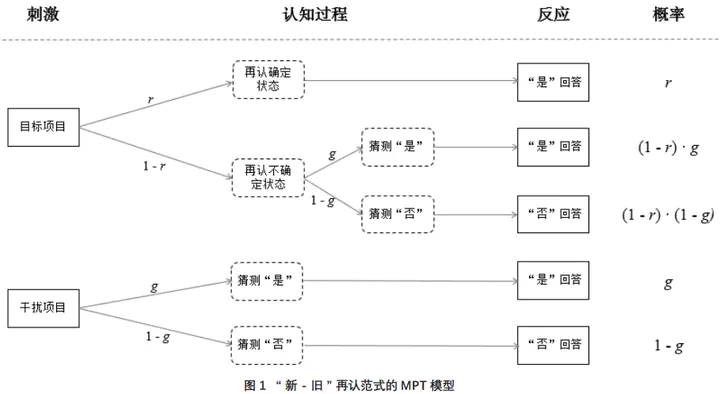 Image credit: Fig1
Image credit: Fig1
摘要
Understanding psychological processes and mechanisms behind social behaviours is one of the most important goals of social psychology. Psychologists have proposed many theoretical models to explain people’s social behaviours. It is still, however, difficult to quantify the contribution of hypothesized psychological processes to a specific behaviour. Recently, social psychologist introduced multinomial processing tree (MPT) models to address this problem. MPT models, which combine knowledge from cognitive psychology, statistics, and other related disciplines, are simple and effective ways to model behavioural data. These models hypothesize that input stimuli are processed in different steps in a tree-like manner. More specifically, each stimulus is processed by a hypothetical psychological process (i.e., a node in the decision tree), which results in a binary outcome (i.e., two branches):either a behavioural response or an intermediate outcome. The intermediate outcome will be further processed by a downstream psychological process (i.e., another node) until a behavioural outcome is produced. Thus, each behavioural output links back to the stimuli through the combination of all the processes before it, such that its probability equals to the product of the probabilities of all preceding processes multiplied together. Importantly, the probabilities of all behavioural outputs from one type of stimuli sum up to one. Thus, researchers can fit these data to multiple nominal formulas and estimate the probability of each psychological process. To use MPT models, researchers first need to construct a model in which the psychological processes of the process-tree are specified. After that, researchers can fit the model with behavioural data and test the goodness-of-fit. Then, the well-fitted model and its parameters need to be validated based on theories. Only after validation, the model can be accepted as valid model of the question-of-interest, and be used to generate and test new hypotheses. Although the logic of MPT models is easy, the estimation of parameters and test of goodness-of-fit are hard to finish manually because of the massive computation involved. Several computer programs (e.g. multitree, treeBugs) have been developed to simplify the calculating procedure. These user-friendly programs make the MPT models more accessible to social psychologists. By now, MPT models have been applied in many areas of social psychology, such as attitude and stereotype. Recently, MPT models have been applied to advanced moral social behaviour:moral judgment. For instance, Gawronski et al. (2017) developed the CNI (consequence, norm, inaction preference) model based on MPT. In the CNI model, the influences of consequences, norm, and inaction preference on moral decision-making are dissociated and quantified. Therefore, researchers can examine hypotheses that previous studies on moral decision-making can not test. For example, it is possible that moral decision-making can be motivated by both utilitarian and deontological motivations, or, by neither of them. Using CNI model, Gawronski et al. (2017) tested the effect of gender, cognitive load, and trait psychopathy on moral decision-making. Given the advantages of quantifying psychological processes behind social behaviours, MPT model can serve as a useful tool for social psychologists. However, before applying MPT models to their own research question, researchers should check carefully whether or not they have clear assumptions about the psychological processes of the social behaviours they interested in. In addition, the neural correlates of assumed psychological processes in MPT models are largely unknown, so future studies may consider combining MPT models with neuroimaging techniques to explore the neural basis of psychological processes. Finally, MPT models might increase the research flexibility in how research design is carried out, which might be more likely to make false positive results. Thus, researchers should be transparent about their analysis and decision process when applying MPT model to their own research questions.